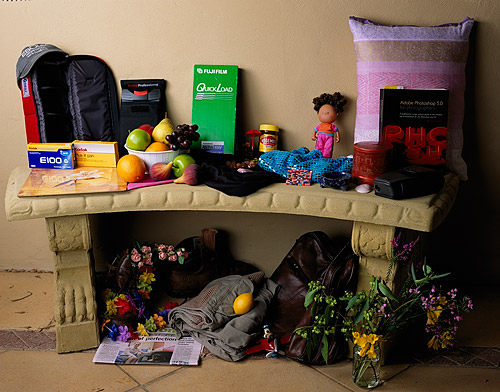My advice was that they should save their money and put that towards getting scans done by professional services using high quality scanners (like drum scanners or top CCD scanners such as Flextight or Creo Eversmart).
My argument was that the Epsons are good for scans up to at least 1200dpi which printed using 300dpi will be a x4 enlargement and for the satisfaction of all but submission into photographic competitions printing at 200dpi will be barely discernible. A 6x9 medium format negative will be 36cm wide printed at 300dpi and 54cm wide at 200dpi.
Naturally this was howled down by at least one perfectionist who claims that even at x2 enlargement. Saying something like:
Before purchasing my Howtek 4500, I made several 16x20 inch prints ( a very modest 2X enlargement) from 8x10 B&W negatives scanned on my Epson 4990 (and before you jump to a rash conclusion, I do know "how to drive it" and have done thousands of scans on it at optimal focus height etc). Some months after owning the Howtek, I rescanned the same negatives and re-printed them - the differences are astounding.
The above emphasis is my own.
Ok, firstly a 2x enlargement is only making a 16x20 print from a 8x10 source, that's like making a 8x10 from a 4x5 negative or a postcard print from a 6x9 (which is cm not inches) negative.
Somehow the differences in results were astounding ... without any offered evidence I'll have to take his word for it.
But perhaps I can get something to work with from a reasonably well established and informative site such as
Large Format Photography . Info who happen to publish a scanner comparison where the same slide (a 4x5 inch slide) has been scanned by the owners of many various scanners. In the interests of "fairness" these scans are offered in "raw" (straight out of the scanner) and "sharpened" where someone has gone to the effort of making the image more presentable with some sharpening.
Some people regard sharpening of the images to be "cheating" and others consider it to be a normal workflow associated with scanning. I'm in the "normal workflow" camp. My experience with using my Nikon LS-4000 scanner and my Epsons (3200, 4870 and 4990) is that the Nikon does not need significant fine sharpening while the Epson usually does.
Naturally colour matching between machines is problematic.
As the owner / user of a few of the Epson scanners I can say that many scans I've seen on the net demonstrate how badly owners normally post process their images. I looked at the sample images on the site for the Tango (as scanned by Daniel Portnoy) and the V750 Pro image (not credited) and thought that I might take one of the ones with less complex colour and attempt to colour match them and then do a little post processing. My workflow was:
- match the V750 image to the Tango image in Photoshop (using match colour)
- apply 1.8 pixel radius sharpening to the V750 image
- downscale both segments to 1200dpi
Here is the result.

I'm not seeing a "astounding difference" here, to me they are quite close.
Keep in mind that this is rather a small segment of the full image.

We are looking at the small part of the folded jacket there under the seat. Viewed in this way its even harder to justify the claim that one can see the difference between a $4000 drum scanner and a $700 Epson clearly at web sizes.
Again this should not be surprising as the consensus of the owners of the Epsons is that they're good for about 2000dpi scans in the real world. Thus if you're only doing smaller prints (less than x4 enlargement or just putting them onto the web) from your Medium Format or Large Format camera then there is nothing substantial to be gained by spending thousands on the scanner you have in your home. Leave the services or professional scanning labs to spend the big bucks on scanners and take your film to them.
I encourage anyone who wishes to do this to grab the images from the site and try it themselves. As I always say, science not religion for this sort of thing.










No comments:
Post a Comment